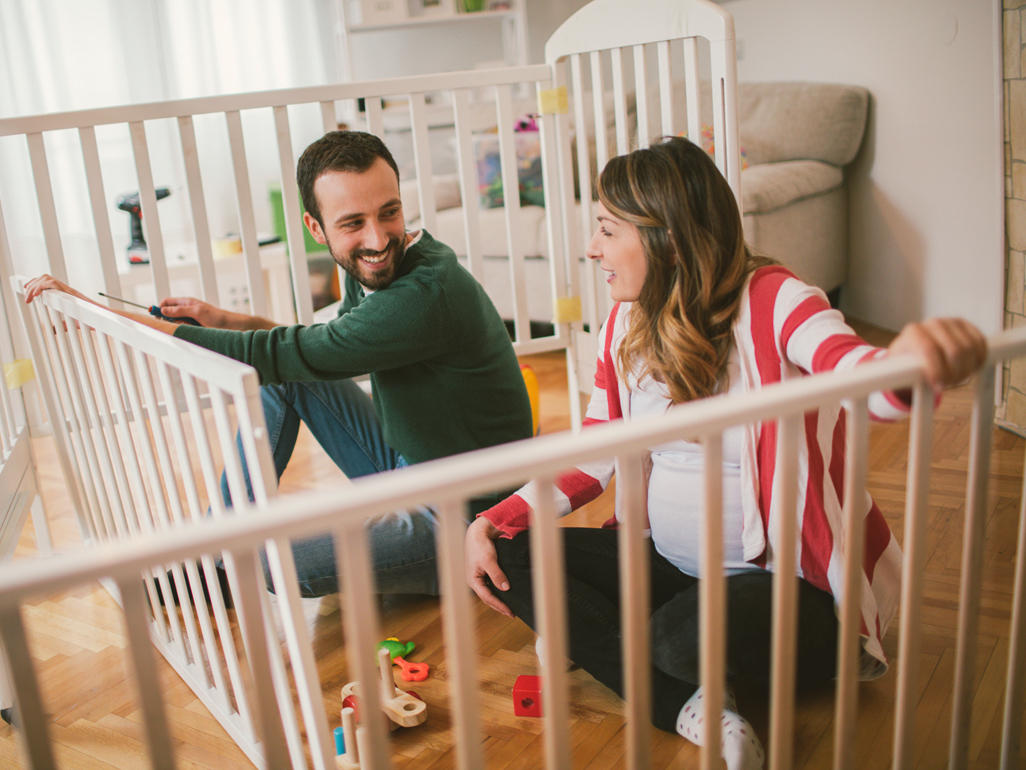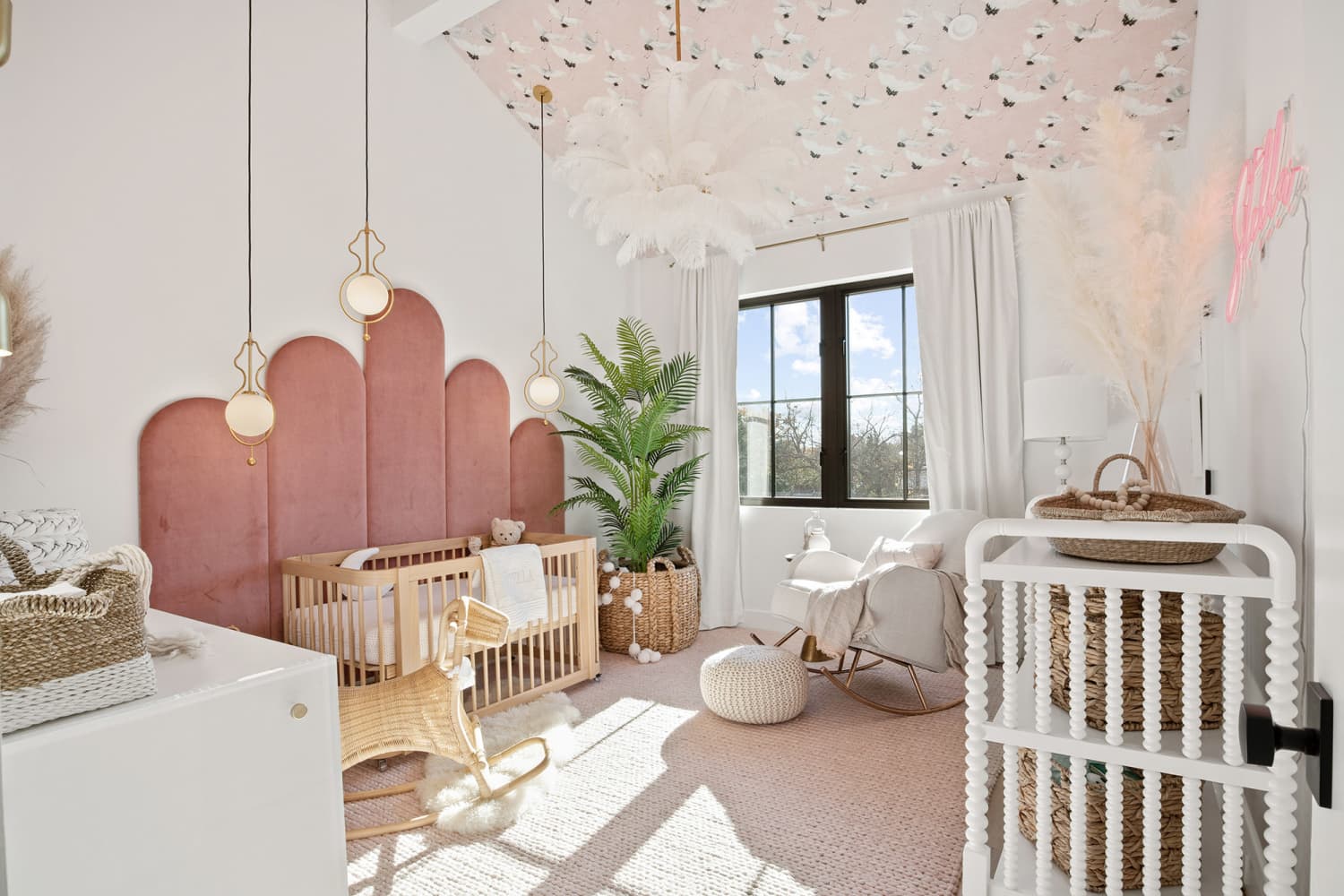A. When should I start building baby furniture?

Starting to build baby furniture can be done before or after the baby is born, depending on personal preference and timing. It’s important to consider factors such as space, budget, and the needs of the growing family when deciding when to start building baby furniture.
1. Setting up a nursery for your baby
Setting up a nursery for a baby is an exciting and important task that involves creating a safe, comfortable, and functional space for the baby to sleep and play in. To ensure a smooth process, it’s important to plan ahead and consider factors such as the baby’s needs, room size and layout, budget, and personal style. This can include selecting a crib, changing table, storage options, decor, and other essential items.
2. When should start setting up a nursery for baby?
It is recommended to start setting up a nursery for a baby around the 20th week of pregnancy or earlier, to ensure enough time for preparation and to avoid any last-minute stress. This gives you enough time to research and select the necessary items, paint or decorate the room, and get everything organized and ready for the baby’s arrival.
3. What do you need in baby’s nursery?

Here is a list of essential items typically needed in a baby’s nursery:
- Crib or bassinet
- Changing table or pad
- Dresser
- Rocking chair or glider
- Storage options (e.g. shelves, baskets, closet organizers)
- Diapers, wipes, and other baby care essentials
- A safe and comfortable mattress
- A mobile or toys for stimulation
- A lamp or nightlight
- A sound machine or white noise generator
- Thermometer
- Humidifier (optional)
Note: Always prioritize the safety and comfort of your baby, and make sure all items meet the relevant safety standards.
4. How much does it cost to set up a nursery?
The cost of setting up a nursery can vary greatly depending on personal preferences and budget. It is possible to spend anywhere from a few hundred to several thousand dollars on a nursery, and many people fall somewhere in between. The cost will depend on factors such as the type of furniture and equipment chosen, the size of the room, and the extent of any renovations or decorations. Many parents opt for a combination of new and used items, or find ways to save money, such as by shopping sales or using hand-me-downs. It’s important to prioritize the baby’s safety and comfort, while also staying within your budget.
5. Tips for designing a nursery

Here are some tips for designing a nursery:
- Safety first: Choose furniture and items that meet safety standards and make sure the room is free of any potential hazards.
- Functionality: Consider the practical needs of both the baby and the parent, such as storage options, a comfortable changing surface, and easy access to baby supplies.
- Comfort: Make sure the room is comfortable for both the baby and any caregivers, with good lighting, temperature control, and a peaceful atmosphere.
- Personal style: Incorporate personal style into the design to make the room feel special and unique.
- Neutral colors: Consider using neutral colors for the walls, flooring, and bedding, to create a calming environment for the baby.
- Storage: Plan for ample storage space to keep the room organized and clutter-free.
- Flexibility: Choose furniture and items that can grow with the baby, such as a crib that converts into a toddler bed.
- Natural materials: Consider using natural materials for furniture and decor, as they can create a warm and inviting atmosphere.
- Lighting: Good lighting is important for the baby’s development, so consider adding a lamp or two, or installing a dimmer switch.
Remember, the nursery should be a welcoming and comfortable space for both the baby and any caregivers, and the design should reflect personal style while prioritizing the baby’s safety and comfort.
6. Tips for nursery organisation and storage

- Use shelving and drawers for clothes and supplies.
- Label containers for easy identification.
- Store items in clear containers, or use see-through boxes.
- Install wall shelves for items that can be hung.
- Invest in furniture with built-in storage such as dressers.
- Create a system for keeping track of baby items such as bottles and pacifiers.
- Use under-the-bed storage containers for items that are not frequently used.
- Use over-the-door organizers for extra space.
- Consider using a closet system to maximize space.
- Group similar items together for easy access and organization.
7. How to design and prepare a baby nursery (basic checklist)

- Choose a color scheme or theme for the room.
- Determine the furniture needed, such as a crib, dresser, and rocking chair.
- Decide on a location for the changing table and install proper lighting.
- Choose appropriate flooring and add a rug for comfort.
- Add storage solutions such as shelving, drawers, and containers.
- Install window treatments for privacy and light control.
- Consider a sound machine or white noise machine for sleep aid.
- Place a rocking chair or glider for nursing or comfort.
- Install proper electrical outlets for lamps, chargers, and sound machines.
- Set up a designated area for dirty laundry.
- Add artwork or wall decorations for aesthetic appeal.
- Make sure the room is well-ventilated, with proper temperature control.
- Have a first-aid kit and fire extinguisher readily available.
- Consider installing baby monitors for added safety.
8. The best time to get the nursery done

The best time to get the nursery done is usually between weeks 24-32 of pregnancy, or as soon as possible after that. This allows enough time to make any necessary purchases, assemble furniture, and decorate the room before the baby’s arrival. It also provides a stress-free environment for the parents-to-be, who can focus on bonding with their baby without having to worry about the last-minute preparations of the nursery.
9. How to plan the nursery
- Determine your budget and needs.
- Choose a location for the nursery and measure the room.
- Choose a color scheme or theme for the room.
- Make a list of necessary furniture, such as a crib, dresser, and rocking chair.
- Decide on storage solutions, such as shelving, drawers, and containers.
- Consider the placement of furniture and storage solutions in the room.
- Make a list of necessary items such as bedding, curtains, lighting, and wall decorations.
- Research and compare different brands and products before making any purchases.
- Order furniture and items as early as possible to ensure they arrive in time.
- Assemble furniture and set up the room before the baby arrives.
- Add any finishing touches such as art, decor, and personal items.
- Make sure the room is safe, with proper ventilation, temperature control, and electrical outlets.
- Consider purchasing a baby monitor and first-aid kit for added safety.
10. Things you can wait to do later

- Decorating the room with wall art or decals.
- Adding curtains or window treatments.
- Purchasing a rug or floor mat.
- Installing a sound machine or white noise machine.
- Adding a rocking chair or glider for nursing.
- Purchasing extra storage containers or organizers.
- Installing a closet system.
- Adding a theme or custom bedding.
- Adding wall-mounted shelves or hooks.
- Installing a ceiling fan or additional lighting fixtures.
- Adding a special chair or ottoman.
- Purchasing additional baby items such as a play yard or swing.
- Decorating with personal items, such as family photos or keepsakes.
11. How long does it take to finish the nursery?
The time it takes to finish a nursery depends on several factors, such as the size of the room, the amount of furniture and decor needed, and the budget. On average, it can take anywhere from a few weeks to several months to complete the nursery, depending on the level of detail and complexity involved. If the parents-to-be have a clear plan and timeline, and all the necessary items and furniture are ordered and delivered in a timely manner, the process can be completed more quickly. However, if the project is more complex or there are unexpected delays, it may take longer.
12. Last-minute touch-ups and the newborn bag

- Last-minute touch-ups: Before the baby arrives, do a final check of the nursery to ensure everything is in place and functioning properly. Check for loose screws, make any necessary repairs, and tidy up the room.
- Newborn bag: A newborn bag should be packed with essentials for the baby’s first few days, including diapers, wipes, extra clothes, burp cloths, a blanket, bottles, pacifiers, and any necessary creams or ointments. It is a good idea to have the bag packed and ready to go a few weeks before the due date, in case the baby arrives early.
It is also important to have a plan in place for who will be responsible for the baby’s care and support during the first few days and weeks, including arrangements for meals, rest, and household chores. Having these plans in place before the baby arrives can help reduce stress and allow the parents to focus on bonding with their new bundle of joy.
13. Conclusion
It is recommended to start building baby furniture between weeks 24-32 of pregnancy or as soon as possible after that, to ensure it is ready for the baby’s arrival. This will also provide enough time to make any necessary purchases and assemble the furniture. A well-prepared nursery can help create a safe and comfortable environment for the baby, and allow the parents to focus on bonding with their new bundle of joy. However, the timing of starting to build the baby furniture depends on individual needs and preferences. In conclusion, planning and preparation are key to ensuring a smooth and stress-free experience for the parents-to-be.
